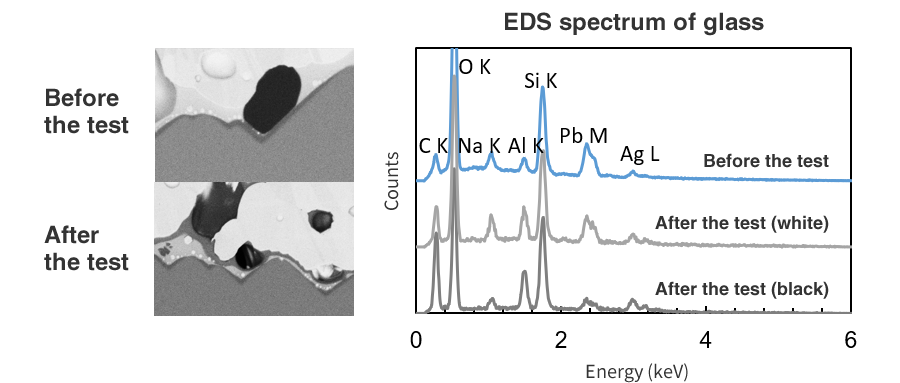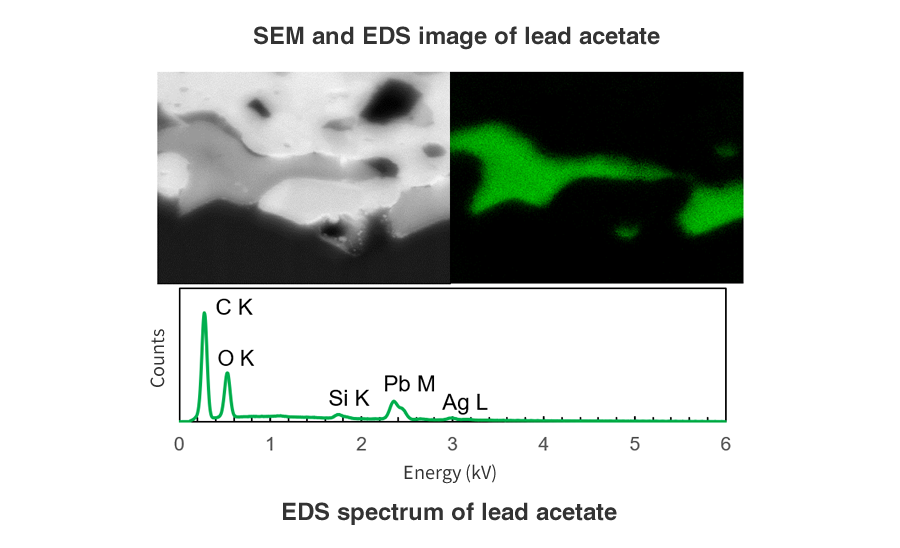Degradation of the front-side Ag electrodes and generation of a lead compound on silicon solar cells during a high-temperature, high-humidity test
01/15/2018
Motivation
- Solar cells that are used in various countries and various weather conditions require long-term reliability.
- Understanding the failure mechanism of the solar cell electrodes allows us to address the issue to extend the life of the electrodes, ensuring a stable energy supply.
- In this study, we undertook a failure mechanism analysis of solar cell electrodes inside the modules.
Issue
- We want to understand the deterioration mechanism of solar cell electrodes inside solar modules.
Results and Findings
- In the electrode portion of the solar cell module with the lowered output, the composition of the glass layer formed there is changed.
- Collaborative research with the Fukushima Renewable Energy Institute, AIST (FREA) of National Institute of Advanced Industrial Science and Technology (AIST).
Recipient of the Best Poster Award at the 7th World Conference on Photovoltaic Energy Conversion (WCPEC-7) in 2018.

Background of the problem
- We have been investigating the electrical characteristics (power generation capacity) of the modules as a reliability test of electrodes in solar cells. However, not much attention was paid to the question of how the electrodes deteriorate?
- Therefore, this time we focused on how the electrodes inside the module deteriorate and confirmed the cause.
- The research was carried out collaboratively with the Fukushima Renewable Energy Institute, AIST (FREA) of the National Institute of Advanced Industrial Science and Technology (AIST) to receive their support on preparing test modules.

Explanation of the phenomena by collaboration with external research institutions
- NAMICS makes the electrode paste.
- AIST prepares the solar cells and modules and conducts the accelerated test at high temperature and high humidity.
- NAMICS analyzes the electrode after degradation.
 The places that changed to black show the interface between the electrode and the substrate with higher resistance and lower output.
The places that changed to black show the interface between the electrode and the substrate with higher resistance and lower output.
Results and Findings
- It was already known that a glass layer is formed between the electrode and the substrate; however, the test showed that the composition of the glass layer changed.

-
Conventional explanation:
Acetic acid generated from an encapsulant dissolves glass.
-
Our finding:
The composition of the glass layer changed (lead eluted).
In general, the electric conductivity is said to decrease as the amount of metal in the glass layer decreases, so the elution of lead is considered to be a factor of the deterioration.
The eluted lead was present as a different compound inside the electrode.

| Exhibition | WCPEC |
|---|---|
| URL | http://www.wcpec7.org/WCPEC-7/ |
| Presentation title | “Corrosion Of The Glass and Formation of Lead Compounds in the Metallization by High Temperature and High Humidity Test of Crystaline silicon PV Module” |


